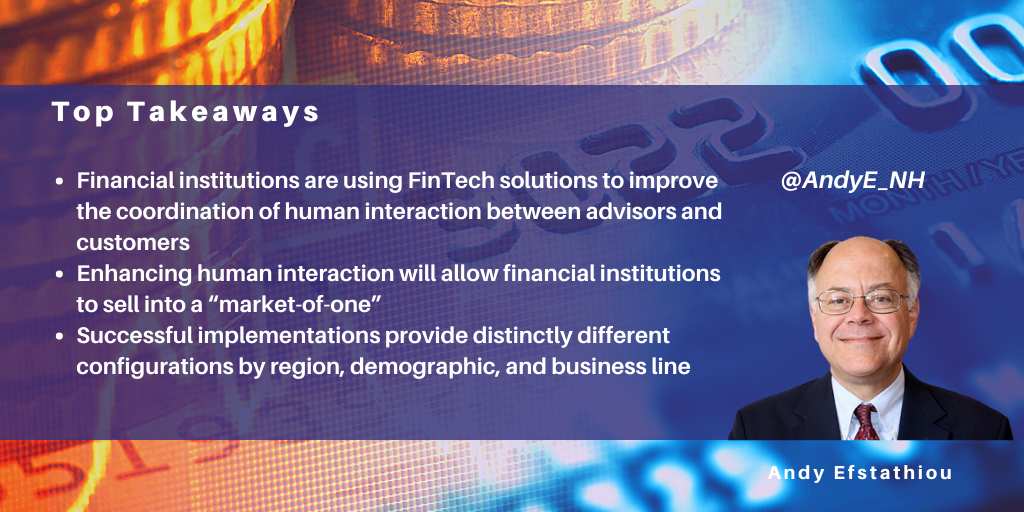posted on Nov 03, 2020 by Andy Efstathiou

It has been extensively reported that industries requiring in-person interaction, such as travel and entertainment, have been adversely impacted by the COVID-19 pandemic. Less obvious has been the impact on industries that are often typified by remote delivery. For example, the wealth and asset management industry is primarily driven by the long-term buildup of wealth and involves infrequent face-to-face meetings.
During 2020, global stock markets have recovered from the March stock market decline (but maybe relapsing in late 2020) when COVID-19 became a household word and businesses were forced to respond. However, despite its advantages, the wealth management industry is still facing strong headwinds from COVID-19 impacts. Overall, industry Q3 results for wealth management businesses have shown strong revenue performance based on strong market appreciation, but not from new business. To maintain operational strength, wealth managers will need to attract new customers and assets to perform well when future market breaks occur.
Three emerging trends can help wealth managers to grow their revenues and control their costs. These trends include:
- An emerging younger customer demographic which prefers very different methods of interaction (primarily digital and mobile interactions)
- Open banking ecosystem of vendors providing products for improved CX and a broader product mix
- Mass affluent offerings of existing product types and, in the future, increased customization of offerings for each customer (hyper-personalization).
Many financial institutions and services vendors are grappling with ways to enhance the customer experience in partnership with human advisors. Improving the coordination of interaction between advisors and customers is a complex, highly human, challenge that firms are beginning to address. For example, Capgemini has developed its Augmented Advisor Intelligence solution to support matching the right investment advisors to individual customers by analyzing and then leverage the advisors’ traits including:
- Prospecting and compatibility scoring
- Propensity modeling
- Next-best action decisions
- Value-based segmentation
- Model financial advisor
- Best practice behavior.
By drawing on internal data (advisor past customer interactions and portfolio) and external data (customer demographics, sentiment, portfolio, and behaviors) the platform uses ML and AI to provide advisor matching recommendations, investment and portfolio recommendations, and best practice recommendations.
The benefits for the wealth management firm include:
- Ability to assign advisors to customers based on fact-based analysis of personality, behavior, and lifestyle matching
- Ability to track and monitor advisor performance, including prescriptive analysis of problems that may be developing
- Improved targeting of outreach and customized offerings to customers, which can increase marketing campaign ROI
- Improved ongoing advisor/customer interaction by use of sentiment analysis of digital communications and improved routing allocation and recommendation options.
The application of this platform across markets has resulted in distinctly different regional requirements, including:
- Mature markets: young people are the primary growing demographic. The focus is on developing omnichannel access to digital-based investment services for customers familiar with wealth management activities but dissatisfied with traditional delivery methods
- Emerging markets: small business owners, often middle-aged are the primary demographic. The focus is on supporting investment into growing their businesses
- Mature Asian markets: rising young professionals are the primary demographic. The focus is on developing a set of mass affluent products that can grow in value to service the lifetime financial needs of individuals with limited or no family experience with financial products.
In short, vendors are trying to move beyond tracking and analyzing customer traits and propensities, to analyzing and changing advisor/customer interactions to optimize CSAT and business effectiveness. Enhancing human interaction will allow financial institutions to sell into a “market-of-one” effectively. These tools will enable consistent success in matching advisors to customers and reduce the cost of delivery to enable greater adoption of mass affluent wealth management offerings in all marketplaces.
Capgemini’s approach to enhancing advisor/customer interactions and relationship management provides a comprehensive approach to this challenge. It identifies stakeholder attributes, predicts behaviors, manages ongoing interactions, and evaluates ongoing relationship health. Most intelligent solutions focus on improving transactions. This type of platform enhances customer lifecycle management performance by improving communication and understanding between human beings.
